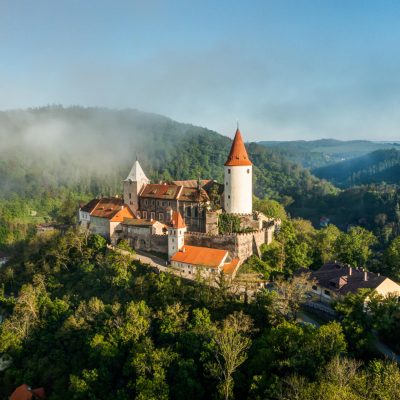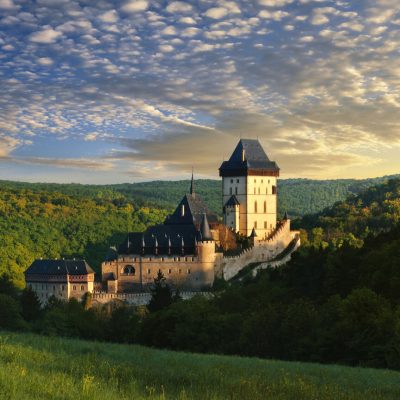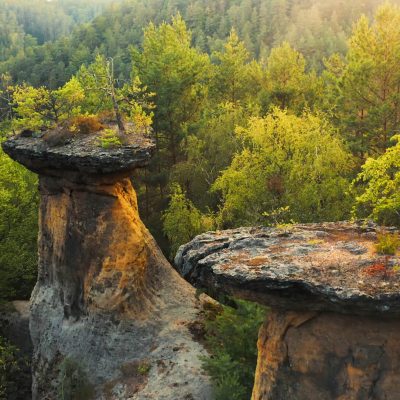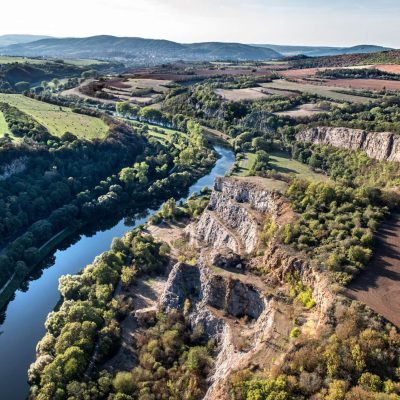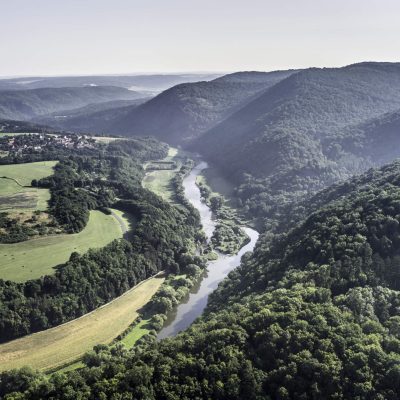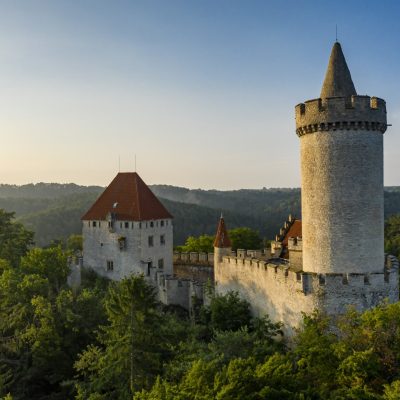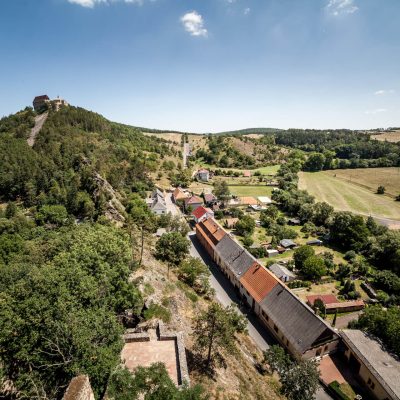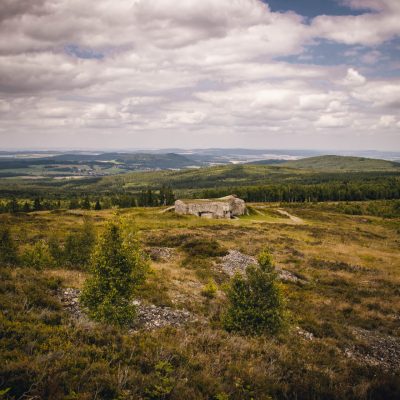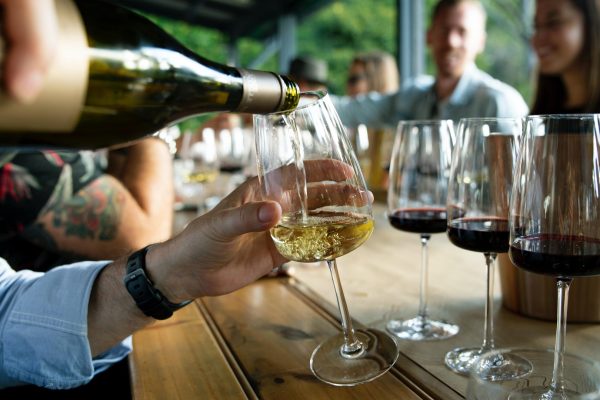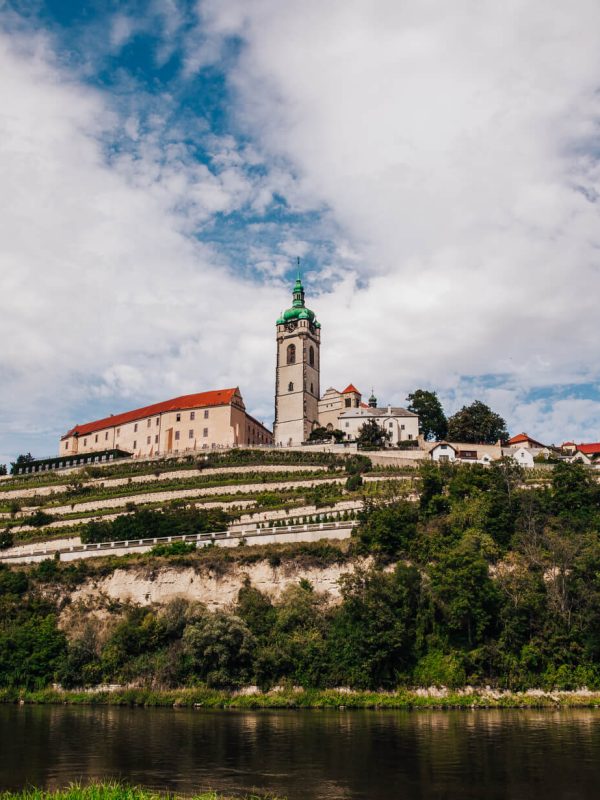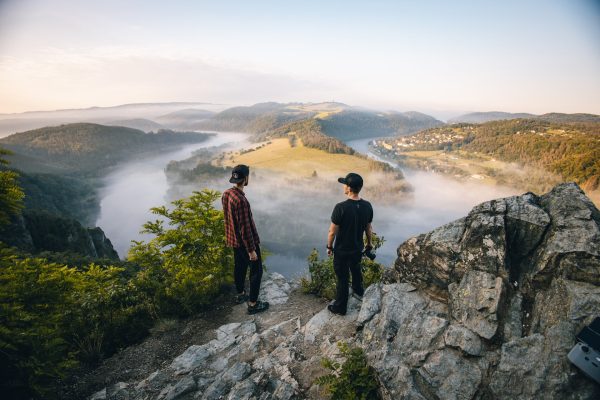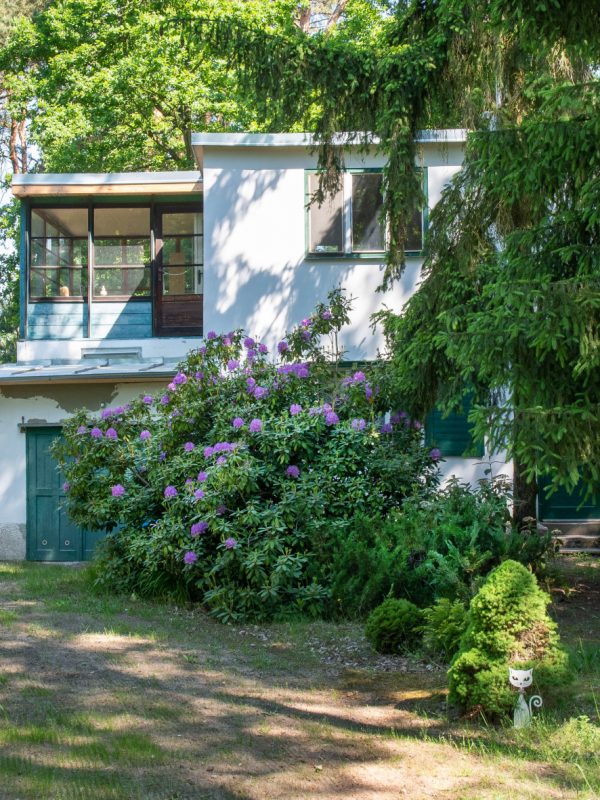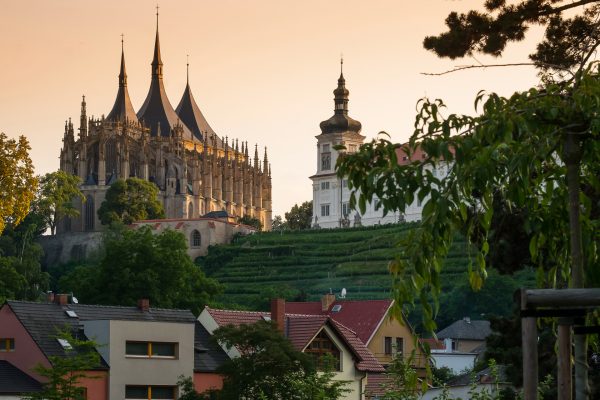The film with a huge set and a stellar cast from all over the world not only shows the story of Jan Žižka, the legendary and undefeated warrior, but also the beauty of Central Bohemia. Follow us in the footsteps of the film.
What do the quarries of the Czech karst, Točník, Kokořín and Křivoklát castles, Kolín and Nymburk, Mount Plešivec and Průhonice park have in common? All these places play a part in the high-budget ‘Jan Žižka’ drama about the origins of the Czech commander. The film will be introduced to Czech cinemas after a long delay on 8 September, while US cinemas will show the film under the title Medieval from 9 September. Producer and director Petr Jákl produced the film with his Hollywood colleague, Cassian Elwes.
Let us take you to the places where stars of world cinematography shot the film for 56 days and find yourselves in 1402, a year full of turbulent events. Jan Žižka, an unknown mercenary who was hired with a group of other men to protect the king’s deputy, demonstrated some great strategic and battle skills and was thus entrusted with the service of King Wenceslas IV himself.
However, the land was actually controlled by Henry of Rosenberg, the richest nobleman in the kingdom. The most famous of the Hussite commanders was later assigned the very delicate task of kidnapping his fiancée, Lady Katherine. That inevitably got him involved in high politics and he had no other choice than to fight. Passion, guilt, lust and revenge became the impetus for his fight for the justice and equality of the common people.
It is at this time that the mercenary became a legend. And this is the story that director Petr Jákl and his team elaborated impressively and in a great detail.
Central Bohemian quarries and the first clapper board
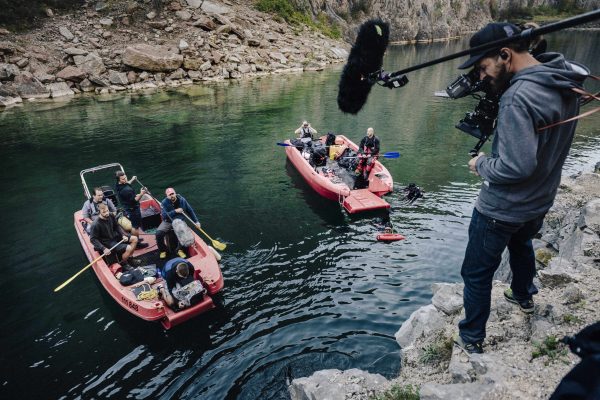
The first take was done on 17 September 2018, after eight years of thorough preparations, in the Velká Amerika quarry, while additional filming was also captured in other quarries of the Czech Karst: Malá Amerika, Homolák and Na Chlumu. The last quarry is the only one accessible to the public, but it is still worth visiting the Czech Karst, where you can look forward to a unique scenic experience!
Put on your hiking boots and walk the yellow trail that leads along the former limestone quarry known as Velká Amerika or the Czech Grand Canyon. It continues to the Malá Amerika quarry and its crystal clear water, and then all the way to the famous castle of Karlštejn. And what if you are not too interested in Karlštejn and want to continue in the footsteps of the film? Follow the yellow trail that will take you close to the former Homolák quarry near the Koněprusy Caves.
You can take a small detour to the hill above Srbsko where the Na Chlumu quarry, famous for the yellow Adonis, can be found. The film-makers also worked there, creating unique scenes from Italy or the surroundings of Žižka’s birthplace, Trocnov.
Točník, Křivoklát and Kokořín: the kingdom of film-makers
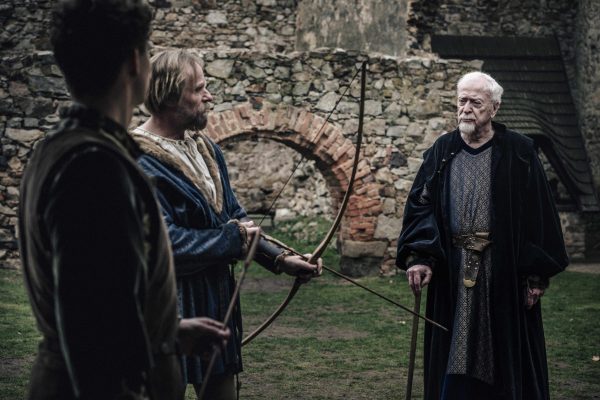
Central Bohemia is royal! The hunting lodge of King Wenceslas IV, as well as the castle of Henry of Rosenberg, was presented in the film thanks to Točník Castle, which forms the largest Czech castle compound together with Žebrák. As like the castle of Rosenberg, Kokořín Castle, surrounded with deep forests and situated on a sandstone rock promontory above the Kokořín valley, was also used. It dates back to the mid-14th century. After you have toured the interiors, don’t miss out on the surroundings as well. The marked Mácha Trail will take you to the unique Kokořín pokličky rocks, and you can ponder about which eye Žižka was missing when walking there. Historians are still not sure about that.
Many famous rulers, but also stars walked through the Křivoklát royal castle and former hunting lodge. Křivoklát represented the Prague Castle, as well as the castle of King Sigismund in the film. Go on a tour and discover that it experienced its golden era, for example, under the rule of Vladislaus II, who had it rebuilt in the flamboyant Jagiellonian Gothic style and turned it into one of the most ostentatious royal residences in Central Europe. It even guarded the crown jewels during the Hussite Wars for some time.
Křivoklát is an attractive location for film-makers and many films have been shot there: Bathory, Wanted, The Fairy Tales of the Brothers Grimm, Borgia, A Boy Called Christmas, The Musketeers and more. How do its strong walls suit Medieval?
Caves and forests as like in the 15th century
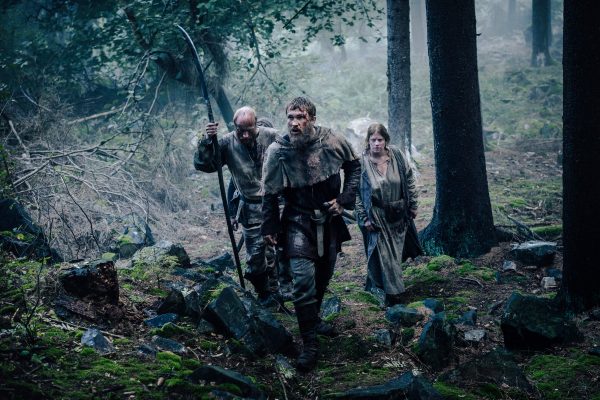
The natural locations, forests and caves were also crucial in the decision to make the film in the Czech Republic. Explore film sites such as Mount Plešivec in Brdy. Local caves used as refuge for film rebels appear on the screen and later on TV.
Hike the “Olympus of Brdy”, as Plešivec is called, and admire the surrounding rocks with stone seas and a rocking stone, scenic vistas and a lake, as well as a hillfort from the Bronze Age. The hill is about 700 metres high, rising above Litavka between Jinec, Hořovice and Hostomice, and has a lot to offer to tourists. If you have strong legs or a mountain bike prepared for a climb, you can follow the seventeen-kilometre-long educational From Jince to Olympus of Brdy loop trail. The trail will take you through the town of Jince with a château and metallurgical history, Křešín with the Na Horách natural monument protecting a steppe with thermophilic plants, Rejkovice and Plešivec itself.
You can continue exploring nature, both known and unknown, in Průhonice Park. Walk all the way to its remote parts, where you might have never been. This is where the film-makers went and took a liking to.
Believe it or not: Prague in Kolín and caves in the Nymburk pool
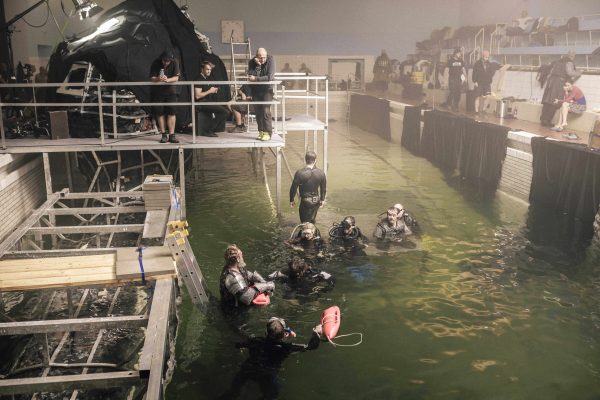
There’s no Prague like Prague! The film Prague comes from Kolín: Jan Žižka was shot inside and around the beautiful St. Bartholomew Cathedral, the dominant feature of Kolín. The area has been recently reconstructed and in addition to the cathedral built by Petr Parléř, you can also look forward to the mysterious ossuary, a bell tower with objects from the cathedral treasury, an old parish school as well as an aromatic herb garden.
The last scenes of the film were shot in nearby Nymburk, where the unique underwater scenes in an artificial cave were shot in a pool in December 2018.
Our trip along Central Bohemian towns is not yet over as we also visit Čáslav, ‘Žižka’s town’. It wasn’t a great fit for the film-makers, but there are many landmarks reminding us that the commander of the Hussites frequently stayed here. His monument stands at the centre of Žižka Square, and it is also home to Žižka’s gate, Žižka’s hall and Žižka’s orchard, which lies on the site of the former Žižka’s barracks. The commander is depicted as one of the speakers of the Tábor Hussites participating in the Čáslav assembly in a large fresco on one of the houses in Mahen Street.
To find oneself amidst stars. But what stars?
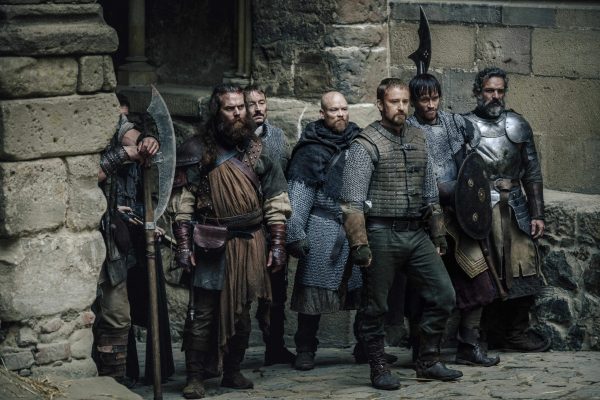
The heart of the Jan Žižka film is Michael Caine, a famous Hollywood actor, holder of two Oscars, who plays the fictitious character of Mr Borš, the right hand of King Wenceslas IV and a fighter for the rights of the common people. The Hussite commander is played by Ben Foster. Henry of Rosenberg, performed by famous German actor Tie Schweiger, is also an important character that influences history as well as the events in the film. The main female character is played by Sophie Lowe, an Australian actress and singer. Englishman William Moseley plays Žižka’s brother Jaroslav, and the antagonist Torak is performed by Dane Roland Møller.
Among the most important Czech actors you will see Karel Roden and Ondřej Vetchý, Jan Budař, Marek Vašut, Ben Cristovao and many others in the film. The film also includes attractive names from the world of sports such as Roman Šebrle and David Svoboda.
The film will also be shown abroad and, therefore, two language versions and trailers are available. You can see them in the original version with subtitles, or with Czech dubbing performed, in addition to the actors on the screen, by Petr Lněnička, Nina Horáková, Martin Stránský, Michal Dlouhý, Václav Rašilov and others.
“The film is accompanied by a book about Jan Žižka, which also includes an extended digital reality. Readers can explore the film locations, and 3D technology will take them to many places together with the film characters”.
The film had to postpone its première in cinemas several times due to the government measures related to the COVID-19 pandemic, but it will finally première on 8 September 2022. It is the most expensive Czech film to date, with a budget reaching almost half-a-billion Czech crowns (approximately $23 million). The production crew also cooperated with the Central Bohemian Film Office.
Worth To See
Křivoklát Castle
One of the oldest and also the most filmed castles in the country is hidden in the deep forests of the Křivoklátsko Protected Landscape Area. It's walls witnessed love stories and royal decisions shaping our society.
Explore
Karlštejn Castle
It holds a very special position among Czech castles. It is one of the symbols of Czech statehood. There used to be crown jewels hidden behind its walls. Introducing: His Majesty Karlštejn.
Explore
Kokořínské pokličky
Kokořínsko is full of beautiful forests where you can find unique and inspirational sandstone rocks and rock formations. How were the dreamy rock formations of Kokořínské pokličky created?
Explore
Czech Karst Protected Landscape Area
You can explore the wealth of the Czech karst, the largest karst area in Bohemia, both on the surface and underground in its unique caves.
Explore
Křivoklátsko Protected Landscape Area
Křivoklátsko: a region of dense forests in the middle of Bohemia – the deciduous and mixed vegetation covers almost one third of the entire area. We could talk about what to see there all day long.
Explore
Kokořín Castle
The "Cursed Castle", which Emperor Ferdinand wrote off after the Thirty Years War, banning repair investments. And at the same time, a castle that has enchanted and inspired artists and was rescued thanks to the efforts.
Explore
Žebrák Castle Ruins
Žebrák is one of the oldest aristocratic castles in Bohemia. Climb its castle tower, which serves as a lookout tower, and take in the wide surroundings.
Explore
Brdy Protected Landscape Area
Our newest protected landscape area, established in 2015, is revered as the promised land by Czech hikers. It is a true paradise for anyone seeking silence and tranquillity in the heart of nature.
Explore

